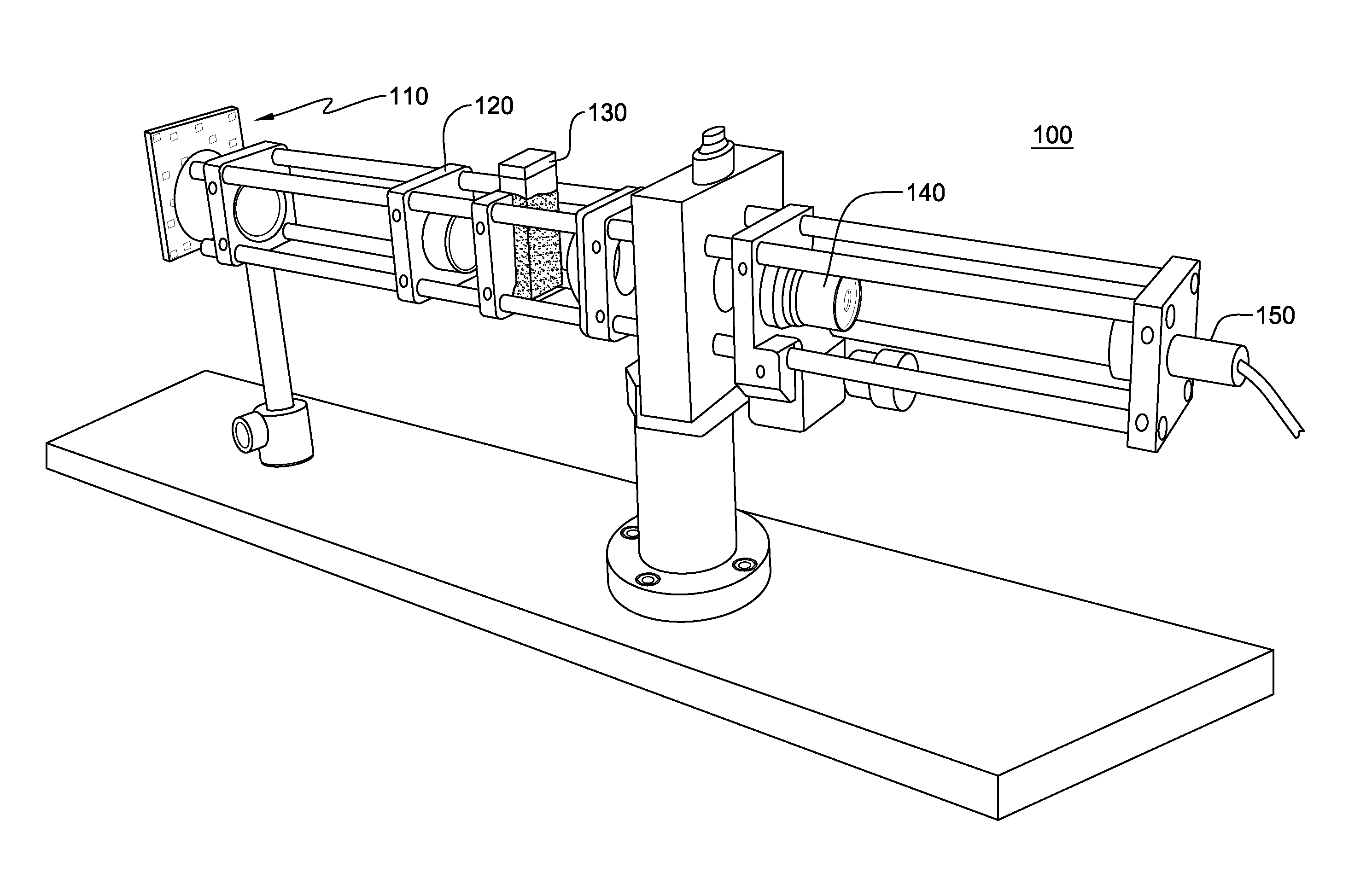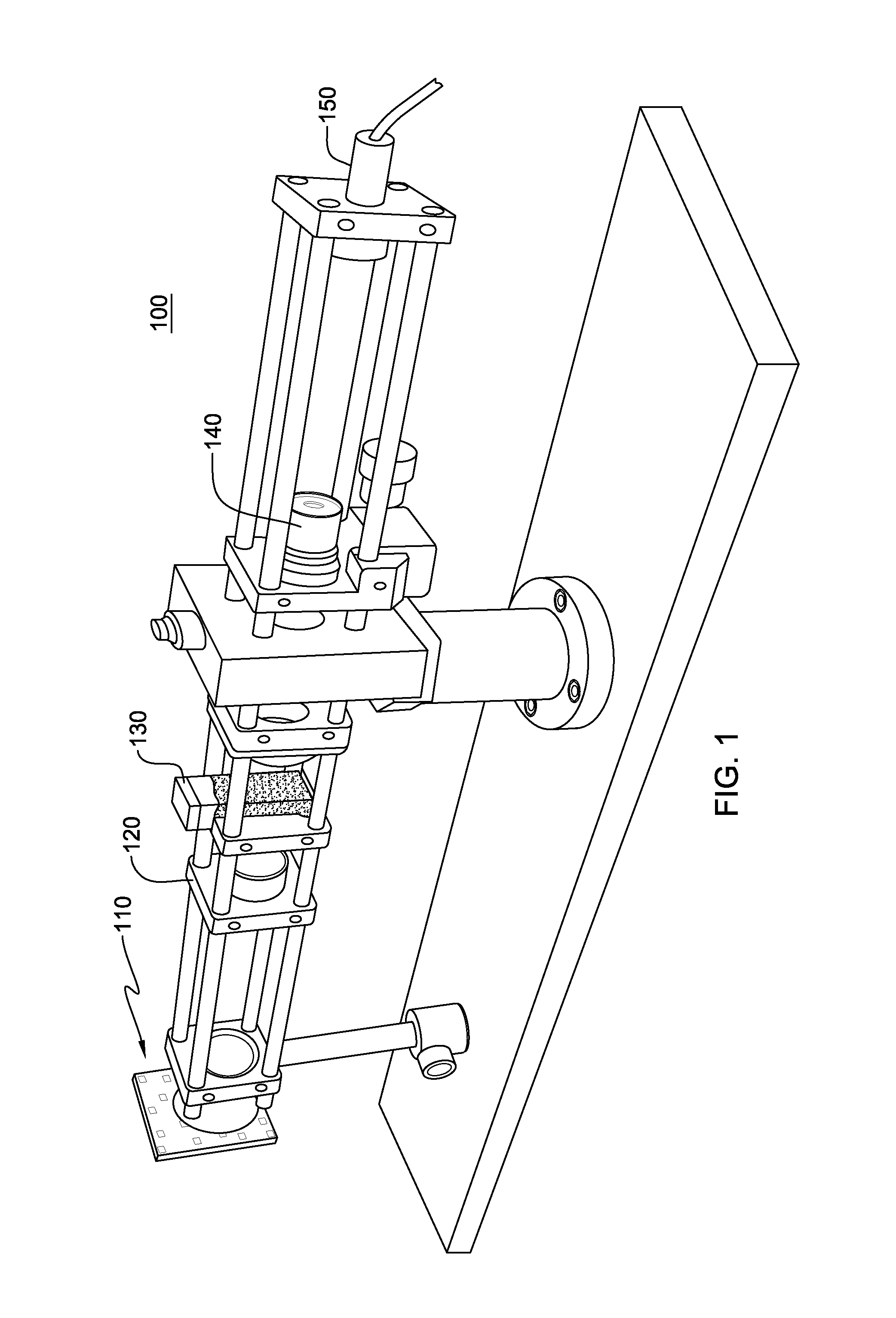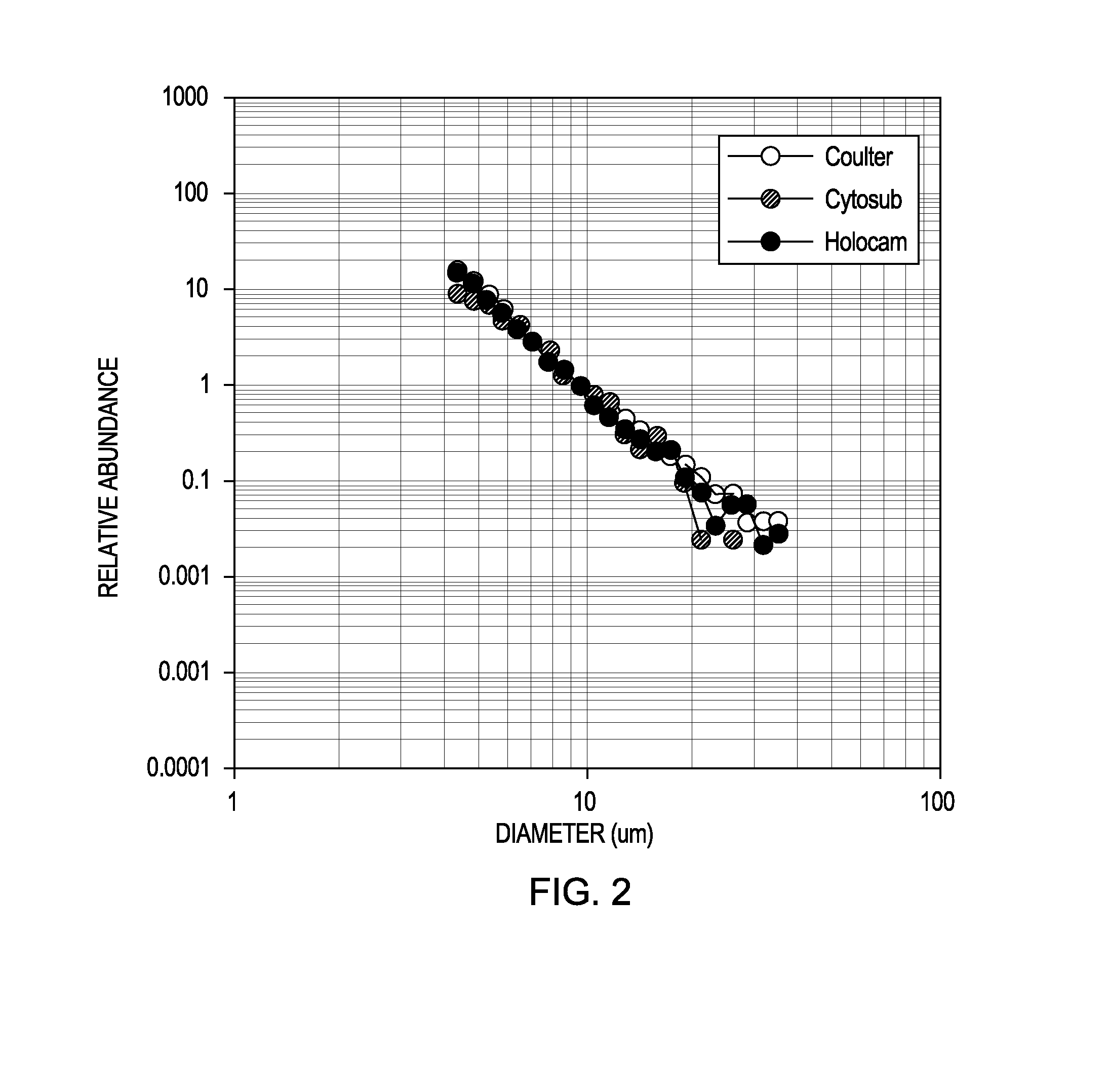Digital holographic microscopy apparatus and method for clinical diagnostic hematology
a holographic microscopy and clinical technology, applied in the field of digital holographic microscopy for clinical diagnostic hematology, can solve the problems of subjective manual counting, unreliable statistically, and inability to discriminate with respect to individual particle volume, and achieve the effect of cost-effectiveness and easy implementation
- Summary
- Abstract
- Description
- Claims
- Application Information
AI Technical Summary
Benefits of technology
Problems solved by technology
Method used
Image
Examples
Embodiment Construction
[0024]Transmission holographic imaging generically refers to recording the interference pattern of a reference beam with light that has been diffracted by particles in a suspension. When reconstructed, the result is a 3-D image of all the particles in the sample volume, all simultaneously in focus. There are a number of different optical arrangements for a holographic microscope, each having different advantages and disadvantages. The simplest optical setup, which is particularly suitable for characterizing small particles, is in-line holography. In this method, a collimated light source, typically from a laser, enters the sample. The diffraction pattern generated by the particle suspension is recorded along with the reference beam, which consists of that portion of the incident light that was not scattered. No separate optical path for the reference beam is needed. Placing a microscope objective in-line after the sample, a digital CCD camera can be used to record the magnified inte...
PUM
 Login to View More
Login to View More Abstract
Description
Claims
Application Information
 Login to View More
Login to View More - R&D
- Intellectual Property
- Life Sciences
- Materials
- Tech Scout
- Unparalleled Data Quality
- Higher Quality Content
- 60% Fewer Hallucinations
Browse by: Latest US Patents, China's latest patents, Technical Efficacy Thesaurus, Application Domain, Technology Topic, Popular Technical Reports.
© 2025 PatSnap. All rights reserved.Legal|Privacy policy|Modern Slavery Act Transparency Statement|Sitemap|About US| Contact US: help@patsnap.com



